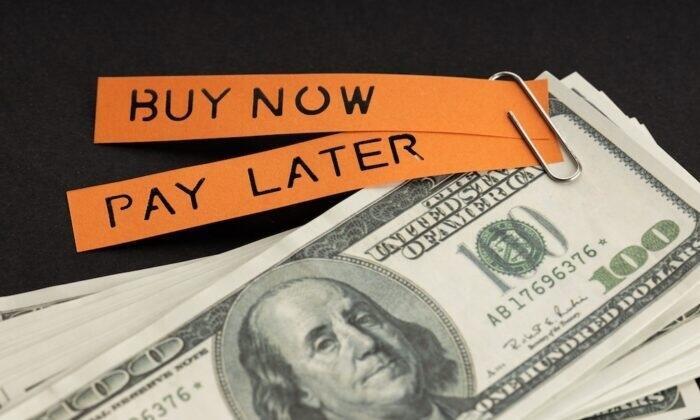Summary
Although the term irrational exuberance originated in the world of finance, its meaning has broadened to describe any situation where enthusiasm becomes detached from reality. Today, it can apply to real estate booms, AI and cryptocurrency frenzies, viral social media trends, or even cultural phenomena like celebrity product launches. In each case, the common thread is the same: optimism and hype override rational analysis, leading individuals or groups to make decisions based on emotion rather than fundamentals. This broader usage underscores the timeless lesson that unchecked excitement—whether in markets, technology, or pop culture—often precedes disappointment when reality eventually reasserts itself.
Article:
Irrational exuberance also applies to individuals who become so self-absorbed in their ventures and ideologies that they believe in their own hype, dreams, visions, and performance without factual evidence to support them.
Key Characteristics
- Emotional Investing: Decisions driven by excitement or fear of missing out (FOMO), rather than analysis.
- Overvaluation: Prices rise because people expect them to keep rising, not because of underlying earnings or cash flow.
- Bubble Formation: This often precedes market bubbles and crashes, as seen in the dot-com boom and the housing bubble.
Alan Greenspan used the term in 1996 to caution that stock prices might be inflated by such sentiment. Later, economist Robert Shiller popularized it in his book Irrational Exuberance, linking it to behavioral finance and speculative bubbles.
Here’s a simple example:
Example of Irrational Exuberance
Imagine a small tech startup launching a new app.
- Now, let’s consider a rational scenario. Imagine the company earns $1 million in revenue, and based on fundamentals, its stock should be worth around $10 per share. That’s a straightforward, logical valuation.
- Irrational exuberance scenario: Investors become overly excited about the “next big thing” and start buying aggressively. The stock price skyrockets to $100 per share—even though the company’s profits haven’t changed.
Why? Because people believe the price will continue to rise, not because the company’s actual value justifies it. This creates a bubble, which eventually bursts when reality sets in, leading to significant financial losses for those caught up in the frenzy. This is a stark reminder of the potential risks and consequences of irrational exuberance.
Examples in Different Contexts
- Real Estate Boom
- “The housing market in 2006 was a classic case of irrational exuberance—buyers were bidding far above asking prices, assuming values would rise forever.”
- Cryptocurrency Craze
- “Bitcoin’s surge to nearly $70,000 in 2021 reflected irrational exuberance, as many investors ignored volatility and fundamentals.”
- Social Media Trends
- “The viral NFT art craze showed irrational exuberance, with people paying millions for digital images without considering long-term value.”
- Corporate Innovation Hype
- “Investors poured billions into unproven AI startups in a wave of irrational exuberance, expecting instant breakthroughs.”
- Pop Culture
- “The frenzy around a celebrity’s new product line was irrational exuberance—fans bought out stock without checking quality or reviews.”
✅ The common thread: emotions override rational analysis, leading to inflated expectations and unsustainable behavior.
Beyond Finance: The Broader Use of “Irrational Exuberance”
Although coined in the context of financial markets, the phrase “irrational exuberance ” has evolved into a metaphor for any situation where enthusiasm becomes unmoored from reality. It captures the human tendency to let optimism, hype, or social pressure override rational judgment, a phenomenon that extends far beyond Wall Street.
Real Estate Booms
Housing markets often illustrate this concept vividly. In the mid-2000s, homebuyers and investors assumed property values would rise indefinitely. Bidding wars and speculative flipping became common, even as fundamental factors such as income growth and affordability continued to lag. When the bubble burst in 2008, the fallout was catastrophic.
Cryptocurrency and Digital Assets
The cryptocurrency surge of 2021 offers another example. Bitcoin soared to nearly $70,000, and NFTs sold for millions, despite having limited intrinsic value and unclear use cases. Many buyers acted out of fear of missing out (FOMO), rather than due to sound analysis—a textbook case of irrational exuberance.
Technology and Innovation Hype
Emerging technologies often attract waves of exuberance. During the dot-com era, companies with little more than a website commanded billion-dollar valuations. More recently, artificial intelligence startups have drawn massive funding rounds based on future potential rather than proven profitability.
Pop Culture and Consumer Trends
The term even applies to cultural phenomena. Consider the frenzy surrounding limited-edition sneakers or celebrity-endorsed products. Many often pay exorbitant prices without evaluating quality or long-term value, driven by hype and social validation rather than rational decision-making.
Here’s a practical sidebar you can add to your article:
How to Recognize and Avoid Irrational Exuberance
· Watch for Detachment from Fundamentals
By being vigilant and recognizing these signs, you can take proactive steps to protect your investments.
· Beware of “Everyone’s Doing It” Thinking
When investment decisions are driven by social pressure or FOMO rather than analysis, caution is warranted.
· Look for Overconfidence and Hype
Excessive media coverage, celebrity endorsements, or unrealistic growth projections often signal speculative behavior.
· Question New Metrics and Narratives
Claims like “this time is different” or “traditional valuation doesn’t apply” often precede bubbles.
· Set Personal Guardrails
Define your risk tolerance, diversify, and avoid investing money you can’t afford to lose.
✅ Bottom Line: Rational analysis, skepticism of hype, and disciplined risk management are not just theoretical concepts, but practical tools that can empower you to navigate the market and avoid the costly consequences of irrational exuberance. By applying these principles, you can take control of your investments and avoid being swept up in the hype.
